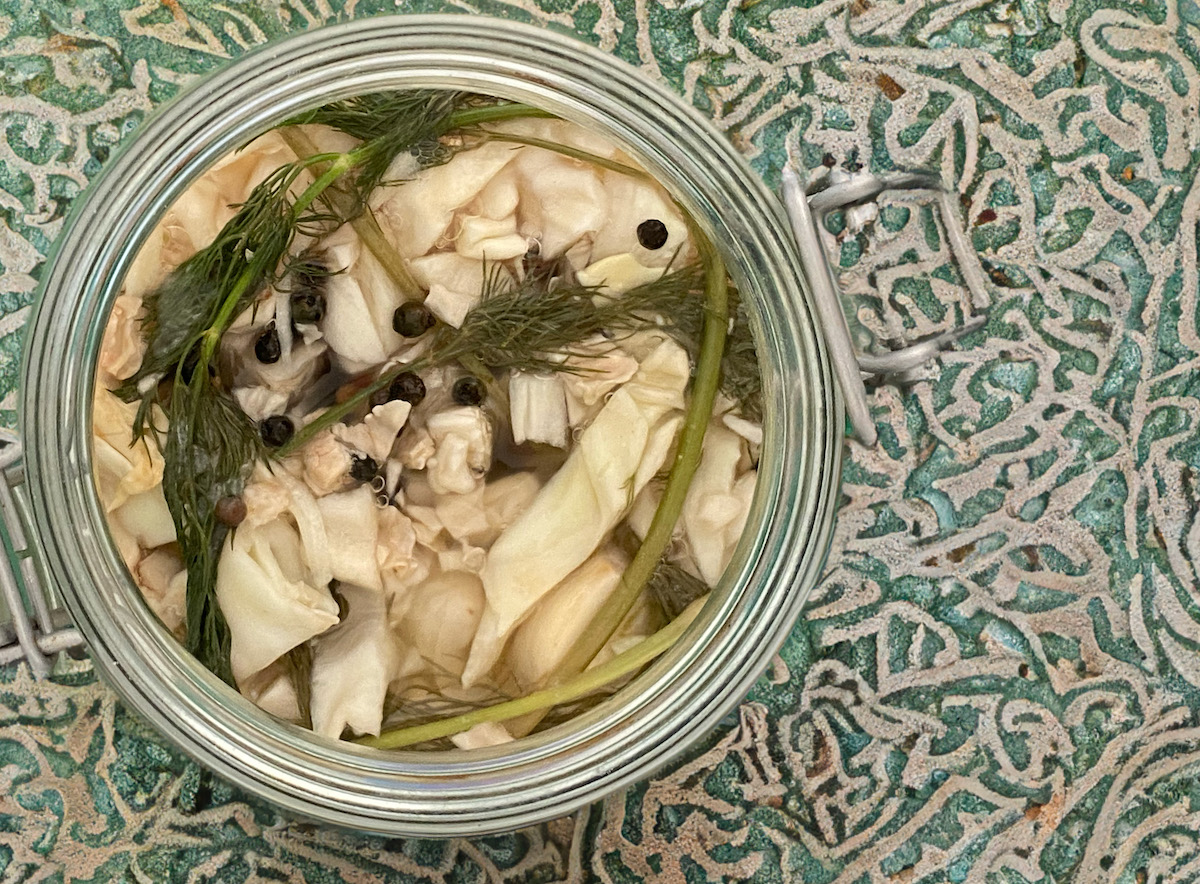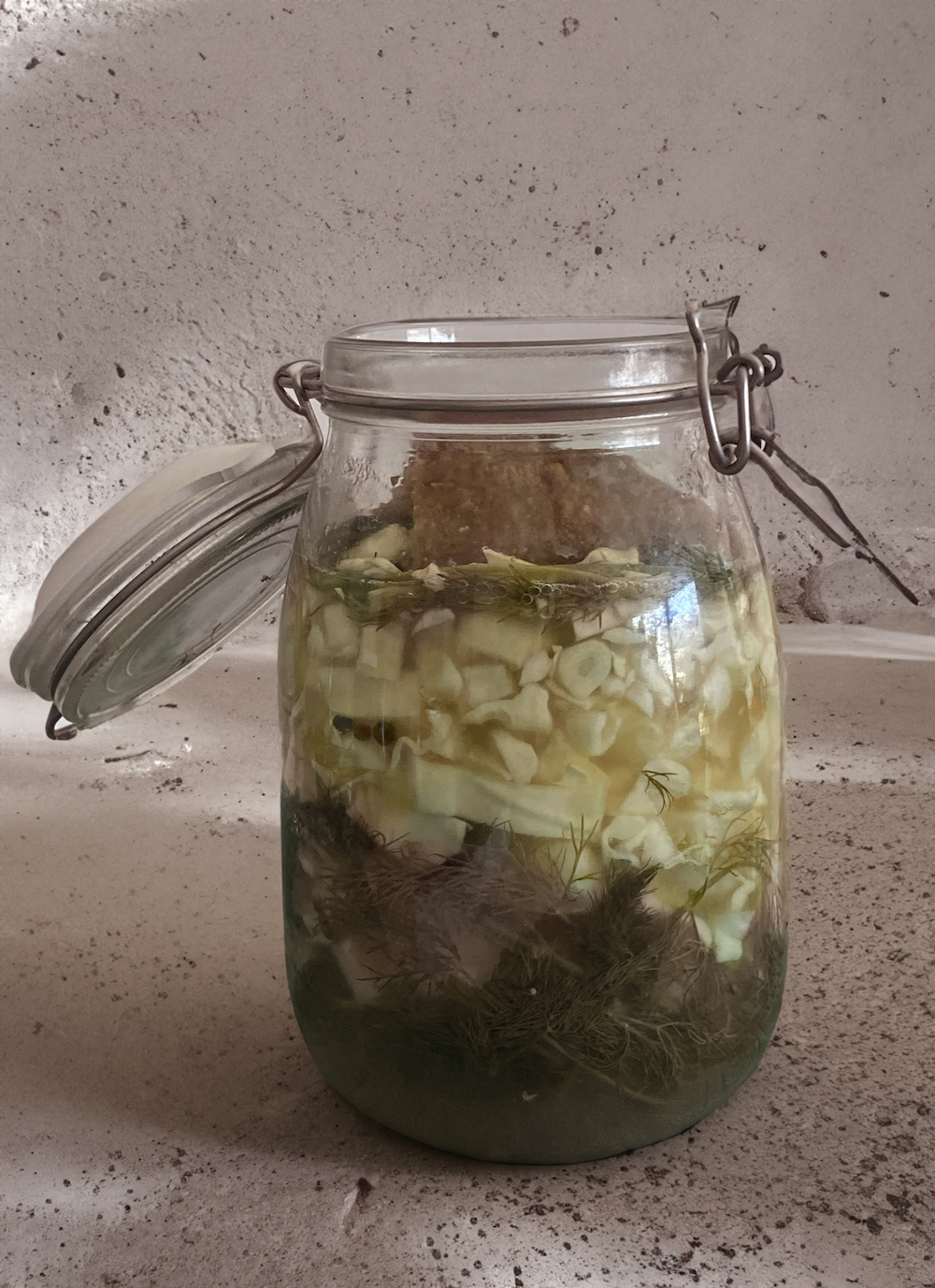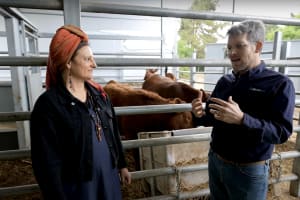The art of fermentation; recipe for dill-pickled cabbage meal

Summer has arrived, and with it, comes a remarkable opportunity to embark on the art of homemade pickling.
Fermentation and pickling using sourdough, also known as fermented flour, has a rich history dating back to ancient times, as far back as 8,000 years when archaeologists found a few pieces of dates.
The practice of fermentation is widely utilized across the globe, with various notable examples such as kosher pickles, Korean kimchi, Russian Kvas, Thai fish sauce, Eastern European sourdough pickles, sauerkraut, kefir, sourdough starters and the Ethiopian flatbread known as injera.
What is fermentation and why is it good?
Fermentation is one of the simplest techniques for food and drink preservation. During the process, microorganisms, such as bacteria, yeast or fungi, convert organic compounds like sugar and scratch into alcohol or acids, creating a natural preservative and changing the taste and texture of the fermented food.
There are two main forms of fermentation, spontaneous or starter culture.
Spontaneous fermentation is when microorganisms naturally present in the food or environment initiate the process.
The second fermentation technique (“starter culture”) involves adding an already-fermented product to the target food as an indicator. In West Africa, fermentation is utilized to render cassava edible. The root of this plant contains a significant amount of poisonous cyanide but with proper treatment, the poison is transformed into a nutritious ingredient.
In many Eastern countries, fermented food is used as traditional medicine. Today, scientific research corroborates the fact that fermented foods serve as excellent probiotics. Their consumption benefits the digestive system, improves the absorption of vitamins and minerals, lowers glycemic response and supports the immune system.
However, history and nutrition aren’t the reasons we so love pickles and sauerkraut or sourdough bread. We love them for their delicious flavors. Pickling vegetables is surprisingly easy. Clean pickle jars, a few slices of sourdough bread, boiled water, salt, properly washed vegetables, fresh herbs, some spices, and patience will suffice.
My mom’s dill pickled sauerkraut, which she prepared each summer, is simply scrumptious. We eat it as a side dish with grilled meat or a stew, put it on a good slice of bread with butter, or indulge in it as a snack.

If we are lucky, my mom will prepare a Hungarian summer-style cabbage meal with it, which is completely different from the regular one; lighter and perfect on a hot day. Below is the recipe:
Dill-Pickled Sauerkraut:
Ingredients
● 3 liter/100 oz large, clean jar with its lid
● 1000 /2.2 lbs of cabbage
● 2-3 sprigs of fresh dill
● 1 slice of high-quality white sourdough bread
● 3 liter /100 oz of water
● 3 tbl salt
● 4 cloves of garlic
● 1 tsp of mustard seeds
● 1 tsp of black or mixed peppercorns
● 1 large (5 liter/170 oz) pickle jar
Carefully wash the cabbage and the dill and check to be sure there are no bugs or remains of dirt on them, which would ruin the fermentation process. Cut the cabbage into small slices – easy with a good knife – or you can use a food processor to grate it. Clean the garlic cloves, cut the top parts and remove the skin.
Boil 2 liters/70 oz of water with 2 tablespoons of salt, and let it cool until it is lukewarm. (If you need more water, the general rule is 2 tablespoons of salt / every liter (35 oz) of water.
Wash the jar. Be sure there are no leftovers from previous use.
I use sterilized jars, boiling each jar to guarantee that the only bacteria left will be the ones I want to grow for fermentation.
Boiling jars is not difficult but needs attention. Take a big pot, place your jars into it, fill it up with cold water and boil it. When the water comes to a full boil, shut off the heat and let the jars cool down until you can remove them by hand.
Place half of the dill at the bottom of the newly-cleaned jar, top it with half of the chopped cabbage, add the garlic and the spices, the other half of the cabbage, close it with the leftover dill, and the slice of sourdough bread. It is essential that the bread should not include any seeds. Just choose the most simple, white, high-quality sourdough.
Push the cabbage down as possible into the jar, and leave at least 5-6 finger spaces on top. Fill the jar with previously boiled and cooled water but be sure to leave a minimum of 3-4 finger spaces so when your pickle starts to get ready, it won’t ooze over the bottle.
Cover the jar with a kitchen towel or a small plate, so it will have some air to “breathe,” and leave the jar in a sunny, warm place for at least two days, at which time you will check to see if the cabbage is done. The ideal pickled cabbage will have a robust pickled flavor but will remain crunchy. At this point, you can remove the bread carefully, close the jar with its lid, and store the sourdough-pickled veggies in the fridge, where they will keep for 2-3 months.

Now that you know about fermentation, it’s time to share my mom’s recipe for a:
Perfect Summer Dill-Pickled Cabbage Meal.
This easy-to-make recipe makes 4 generous servings.
In a large pot, heat 2-3 tablespoons of oil, sauté one finely chopped onion, and add 4-5 cups of the dill pickled cabbage without the pickle juice. Add 2 cups of water, season it with salt and pepper.
Mix 250 grams of ground beef (or beyond meat) with ½ cup of uncooked rice and an egg. Form walnut-sized balls out of the mix, and when the cabbage starts to boil, add the balls. Set it to low heat and boil it until the meat is cooked.
Serve the cabbage dish hot or cold, with sour cream and fresh dill.
Bete Avon! (Hebrew for bon appetit!)

Bea Bar Kallos is a Hungarian-Israeli photojournalist and journalist living in Tel Aviv. Over the years, she received numerous awards for The Hungarian Pictures of the Year and the Israeli Press Photo Contest, Edut Mekomit. Her work has been exhibited in New York, Warsaw, Budapest, Milan, Berlin, Belgrade, Jerusalem and Tel Aviv.













